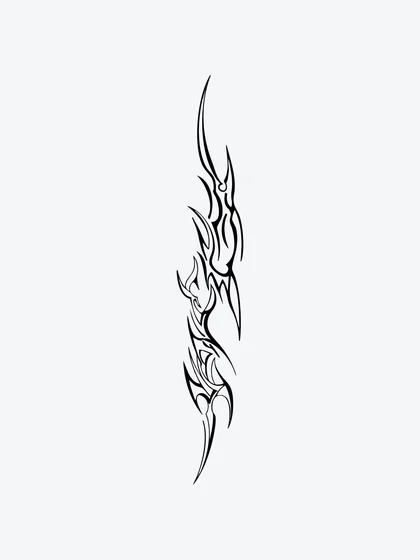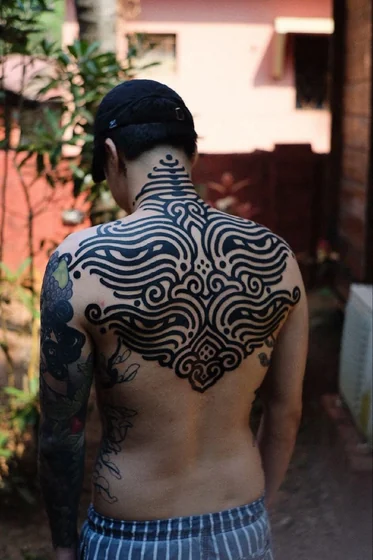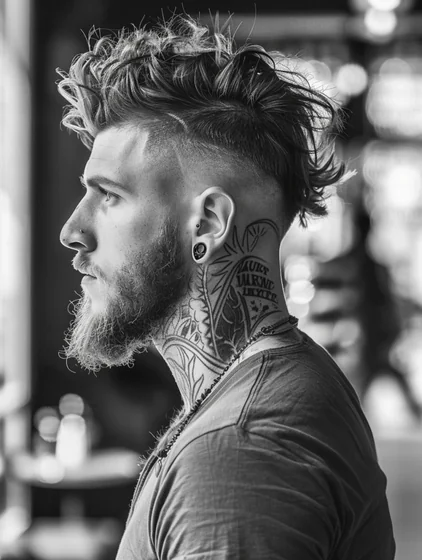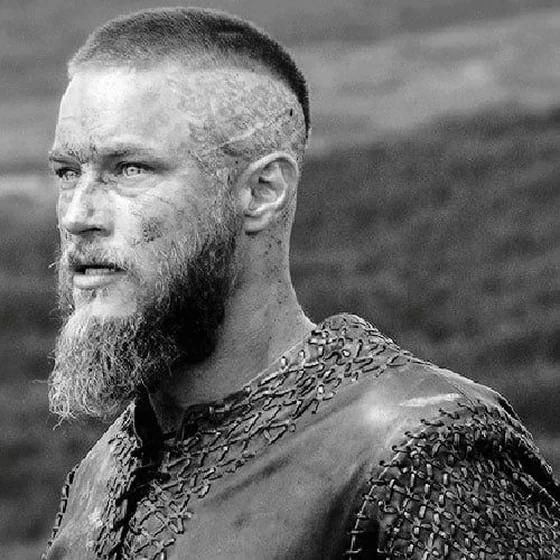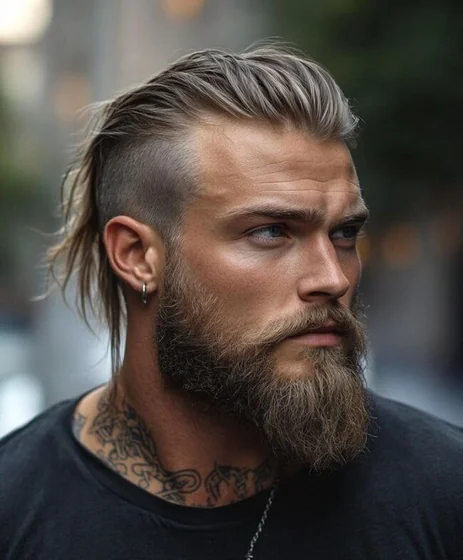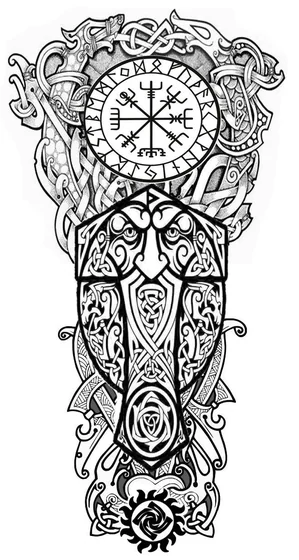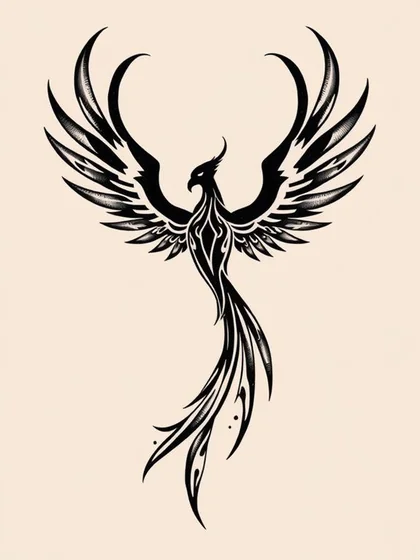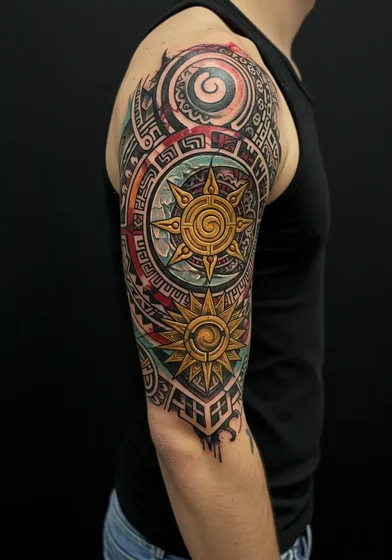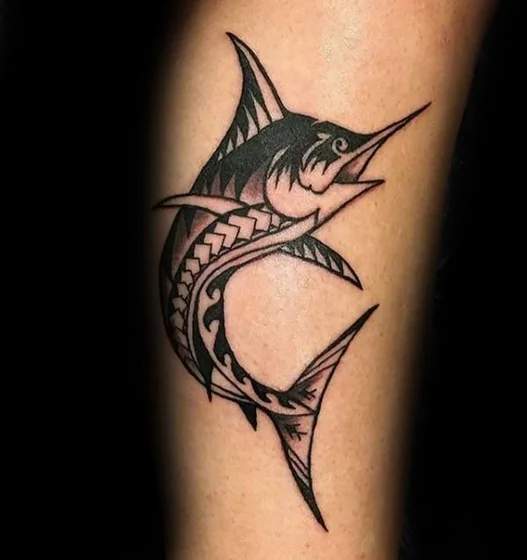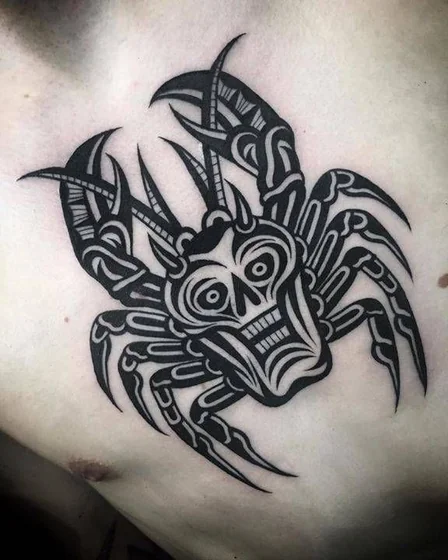Filters
Tattoo Ideas
Start Your Tattoo Design Journey
0Tattoos Designed This Week On Tatspark
Now in Beta — share your feedback and shape what's next.
Ancient Power Meets Modern Masculine Expression
Tribal tattoos represent one of humanity's oldest forms of body art, carrying deep ancestral significance that resonates powerfully with contemporary men seeking meaningful ink. These bold geometric patterns originated across diverse cultures—from Polynesian islands to Celtic territories, Maori warriors to Native American tribes—each developing distinctive visual languages that communicated identity, status, and spiritual beliefs through skin.
The enduring appeal of tribal designs lies in their commanding visual impact. Thick black lines create striking contrast against skin, forming intricate patterns that flow with natural musculature. Modern interpretations honor traditional motifs while adapting them for today's aesthetic sensibilities, resulting in tattoos that bridge ancient heritage with contemporary style.
Cultural Origins and Symbolic Depth
Polynesian tribal traditions developed some of the most recognizable patterns, where every curve and line held specific meaning. Warriors earned their tattoos through acts of bravery, with placement and complexity reflecting social rank and personal achievements. These designs typically feature sharp angles, geometric repetition, and flowing curves that wrap around limbs and torsos.
Maori ta moko traditions from New Zealand created facial and body patterns that served as visual genealogies, encoding family lineage and personal history into spiraling koru patterns and bold parallel lines. Celtic tribal work emphasizes interwoven knots and spirals representing eternal cycles, while Native American designs incorporate animal spirits and natural elements through geometric abstraction.
Contemporary tribal tattoos often synthesize multiple cultural influences, creating hybrid designs that maintain the bold aesthetic while allowing personal interpretation. This evolution respects ancestral traditions while acknowledging modern multicultural identity.
Masculine Placement Strategies for Maximum Impact
Arm placements remain exceptionally popular for tribal work, with designs flowing from shoulder to wrist in sleeves that accentuate bicep definition and forearm strength. Half-sleeve compositions typically begin at the shoulder cap, extending to mid-forearm with patterns that complement muscle contours. Full sleeves offer expansive canvases for complex storytelling through interconnected motifs.
Chest pieces command attention through symmetrical designs that spread across pectorals, often extending over shoulders or down the sternum. These placements work particularly well for eagle or phoenix motifs rendered in tribal style, similar to powerful eagle tattoo symbolism that represents freedom and dominance.
Back tattoos provide the largest continuous surface for elaborate tribal compositions. Upper back pieces between shoulder blades create focal points visible when shirtless, while full back designs transform the entire torso into a unified artistic statement. Ribcage placements offer vertical spaces where patterns can flow with breathing and movement.
Leg designs allow tribal patterns to wrap around thighs and calves, creating visual interest that complements athletic builds. Tribal bands around biceps, forearms, or calves provide simpler options that still deliver bold visual impact without requiring extensive commitment.
Design Variations and Technical Considerations
Traditional blackwork remains the foundation of tribal tattooing, utilizing solid black ink to create high-contrast patterns. Skilled artists employ varying line weights to build depth and dimension, with thicker outlines defining major shapes while finer details add complexity. Negative space becomes equally important, allowing skin tone to contribute to the overall composition.
Contemporary variations incorporate limited color—typically red or blue—to highlight specific elements or create visual separation between pattern layers. Some artists blend tribal motifs with realistic elements, creating fusion designs where geometric patterns transition into photorealistic imagery.
Modern tribal designs often feature sharper, more aggressive angles than traditional styles, appealing to men seeking edgier aesthetics. Bio-mechanical fusion combines tribal patterns with machinery elements, suggesting organic technology emerging from or merging with flesh. These designs work exceptionally well on shoulders and arms where mechanical joints align with anatomical joints.
Choosing Your Artist and Design Approach
Selecting an artist experienced in tribal work proves essential for achieving clean, bold results. Tribal tattoos require precise linework and solid black saturation—any inconsistency becomes immediately visible in these high-contrast designs. Review portfolios specifically for tribal pieces, examining line quality, pattern symmetry, and how well designs follow body contours.
Consultation sessions allow collaboration on custom designs that incorporate meaningful elements while maintaining visual cohesion. Communicate desired symbolism, preferred cultural influences, and placement goals. Experienced artists will sketch designs that flow naturally with your physique, accounting for muscle definition and body movement.
Consider how tribal designs might integrate with existing tattoos or allow for future expansion. Many men begin with smaller tribal pieces—armbands or shoulder caps—before committing to larger works. This approach allows testing artist compatibility and experiencing the tribal aesthetic before extensive coverage.
Aftercare and Long-Term Maintenance
Tribal tattoos' bold black ink generally heals well with proper aftercare. Keep the area clean and moisturized during the initial two-week healing period, avoiding sun exposure and submersion in water. The solid black saturation typical of tribal work means colors remain vibrant longer than detailed shading, though sun protection remains important for preventing fading.
Over time, even well-maintained tribal tattoos may require touch-ups to restore crisp lines and solid black saturation. Schedule touch-up sessions every 5-10 years depending on sun exposure and skin type. The geometric nature of tribal designs makes touch-ups relatively straightforward compared to photorealistic work requiring precise shading recreation.
For those interested in exploring complementary masculine designs, skull tattoo motifs pair powerfully with tribal patterns, combining mortality symbolism with ancestral warrior aesthetics.
